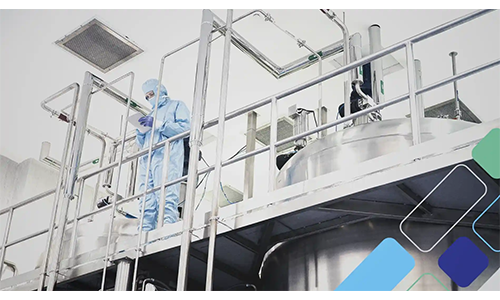The new silica regulation imposed by the Occupational Safety and Health Administration (OSHA) limiting employee exposure to crystalline silica may be detailed and complex, but the agency takes compliance seriously and is not expected to cut an employer any slack if caught violating the rule.
The rule went into effect on June 23 for most employers but were imposed on Oct. 23, 2017, on the construction industry, where OSHA believes most worker exposure to silica takes place. A study of the first six months of OSHA enforcement in the construction industry shows where it focused the greatest attention.
The rule significantly lowers the silica level that workers may be exposed to and imposes several new requirements on employers. According to OSHA estimates, 2.3 million workers are exposed to silica at work and epidemiological studies showed a strong link between silica exposure and lung cancer in at least 10 industries.
“Compliance with the rule will present challenges for some employers and industries at a time when OSHA enforcement and OSHA penalties have been on the rise,” stresses attorney Gregory S. Narsh of the law firm of Pepper Hamilton LLP.
During the first six months the rules were enforced for the construction industry, OSHA found 117 violations. Federal OSHA and State Plans classified about 80% of these violations in construction as “serious.” Increasing the danger for employers, OSHA rarely cited violations of the silica standard alone—they usually accompanied findings of other violations, such as fall protection standards.
The most commonly-cited violation for construction employers was failure to conduct an assessment of worker exposure to silica. The second largest category was failing to adhere to the list of equipment and tasks, along with OSHA’s required engineering and work control methods and respiratory protection. At least 20 citations also were issued for lack of a written exposure control plan.
Crystalline silica is a common mineral that is found in a wide range of materials, including stone, artificial stone and sand. When materials that contain silica are cut, ground or drilled, or workers handle industrial sand, their lungs can be exposed to tiny silica dust particles, called “respirable” particles.
If these particles enter an unprotected worker’s lungs they can cause silicosis, which is an incurable, and in some cases, deadly lung disease. Respirable crystalline silica also has been linked to lung cancer, chronic obstructive pulmonary disease and kidney disease. In most cases, these diseases occur after years of exposure to silica.
“The new rule will challenge employers to reduce worker exposure in ways that are protective of the worker, compliant with the law and economical,” says Narsh.
What OSHA Expects
OSHA expects compliance to cost employers up to $1 billion dollars a year. “The agency expects the cost of compliance to be so high because the silica rule is among the broadest set of standards OSHA has ever issued, covering 2.3 million workers and 676,000 employers,” note attorneys Mark Lies, Patrick Joyce and Adam Young of the Seyfarth Shaw law firm.
However, OSHA believes the costs will be spread evenly over each employer, meaning each employer should expect to spend upwards of $1,500 per year on compliance (with compliance costs being higher initially). OSHA predicts compliance costs for small businesses will be slightly less per year—around $560.
The new rule establishes a Permissible Exposure Limit (PEL) for workers at 50 micrograms per cubic meter (μg/m3) of air over the course of an eight-hour day, called an eight-hour time-weighted average (TWA). This cuts allowable exposures in half in general industry and even more in the construction and maritime industries.
OSHA says even a PEL of 50 μg/m3 poses a significant risk. However, it determined that 50 μg/m3 is the lowest level that can be reasonably achieved through the use of engineering controls and work practices at the majority of employers. OSHA also established an “action level” of 25 μg/m3 over an eight-hour day. (Action levels indicate the amount of a harmful or toxic substance requiring medical surveillance, increased industrial hygiene monitoring or biological monitoring.)
All employers are required to assess exposure of each employee who is, or can reasonably be expected to be, exposed to respirable crystalline silica at or above the action level of 25 μg/m3 over an eight-hour day. The rule provides two avenues to conduct the monitoring: the performance option and the scheduled monitoring option.
Under the performance option, the employer must assess the eight-hour TWA for each employee on the basis of air monitoring data or “objective data” to accurately characterize exposure to silica. The scheduled monitoring option requires the employer to complete an initial eight-hour TWA for each employee on the basis of “personal breathing zone” air samples that reflect exposures for employees on each shift, each job classification and in each work area.
When more than one employee works a shift, in a job classification or in a work area, employers need to sample a representative fraction of employees to meet the requirement. When conducting this representative sampling, employers are expected to sample those workers with the highest expected exposure to silica.
If initial monitoring shows that employee exposure is below the action level, the employer can discontinue monitoring these employees. Where monitoring indicates that exposure is at or above the action level but below the PEL, the employer is required to repeat the scheduled monitoring within six months of the most recent monitoring.
In addition, where monitoring indicates that exposure is at or above the PEL, employers must repeat the monitoring within three months of the most recent monitoring, the Seyfarth Shaw attorneys point out.
Employers must reassess employees whenever there is a change in production, process, control equipment or work practices expected to result in additional exposures at or above the action level. Also, employees must be notified of monitoring results within 15 working days (five working days for the construction industry) of completing the exposure assessment.
Training and Monitoring
Under the silica rule, employers are required to meet training requirements similar to OSHA’s pre-existing Hazardous Communication Standard, and must perform ongoing assessments of possible worker exposure, the Seyfarth Shaw attorneys stress.
Specifically, employees must be informed about hazards associated with respirable silica; specific tasks in the workplace that could result in exposure; measures the employer has implemented to protect employees from exposure (including engineering controls, work practices and respiratory protection); and the purpose and description of the company’s medical surveillance program.
Preferred engineering methods for controlling exposure include using water saws to reduce airborne silica dust (wet methods) or localized ventilation (such as a vacuum) to remove dust from the area, the attorneys say, while preferred work practices to control worker exposure include wetting down dust before sweeping it up.
Respirators are only allowed when engineering and work practice controls are unable to maintain worker exposures at or below the PEL. This is because OSHA has found that respirators are less practical and not as protective as engineering controls.
Employers who use respirators must implement a comprehensive respiratory protection program meeting OSHA standards for fit testing, medical monitoring, cleaning and maintaining respiratory equipment, and changing filters. “Respirators must be worn consistently and correctly by employees to be effective and can often be uncomfortable, especially in hot weather, making worker compliance an issue,” the Seyfarth Shaw attorneys observe.
Employers are required to demarcate and limit access to areas where exposure to silica is expected to be above the PEL. OSHA even spells out how the signs should be worded: “DANGER—RESPIRABLE CRYSTALLINE SILICA—MAY CAUSE CANCER—CAUSES DAMAGE TO LUNGS—WEAR RESPIRATORY PROTECTION IN THIS AREA—AUTHORIZED PERSONNEL ONLY.”
Employers are required to prepare a written exposure control plan for silica exposure. The plan, which is to be updated at least annually, must contain information about:
● Tasks in the workplace that involve exposure to respirable crystalline silica;
● Engineering controls, work practices and respiratory protection used to limit employee exposure to respirable crystalline silica for each task; and
● A description of the housekeeping measures used to limit employee exposure to silica.
Written exposure control plan standards for the construction industry have additional requirements. They must include a description of procedures used to restrict access to work areas to minimize the number of employees exposed to silica, including exposures generated by other employers or sole proprietors. A construction employer also must designate a competent person to make frequent and regular inspections of job sites, materials and equipment to ensure the plan is properly implemented.
The rule also includes more stringent medical surveillance requirements for the construction industry. This includes a first-time “baseline” exam consisting of chest X-rays, respiratory examinations, pulmonary function exams, tuberculosis tests, and a medical and work history.
On June 23, 2020, the requirement to offer medical surveillance and monitoring expands to all employees exposed above the action level of 25 μg/m3 over an eight-hour day for 30 or more days in a single year. For employees potentially exposed to silica levels above the action level, the employer will be required to obtain a written medical opinion from a physician or other licensed healthcare professional.
However, these opinions will be limited in nature, the Seyfarth Shaw attorneys explain. Employers only be provided with the date of the examination; a statement that the examination has met the requirements of the standard; and any recommended limitations on an employee’s use of respirators. More detailed information provided to workers will not be passed on to the employer.
Detailed records must be maintained showing all exposure measurements taken to assess employee exposure to silica. Employers also are required to maintain information related to “objective data” showing the crystalline silica-containing materials at the workplace, testing data related to that material, and a nebulous requirement to keep “other data relevant to the process, task, activity, material or exposures on which the objective data were based.” Finally, employers must maintain medical surveillance data for each employee.
While the attorneys don’t explicitly say so, you can be sure that the new silica rule creates a legal minefield employers should not attempt to traverse without first securing the expert assistance of a knowledgeable and experienced safety professional, and the advice of a good lawyer.
Other Affected Industries
Although OSHA believes workers in the construction industry suffer from the most widespread exposure to crystalline silica, those who work in other industries also are exposed to it as well. Among those expected to adhere to the new rule as of June 23 are:●
● Glass manufacturing
● Pottery products
● Structural clay products
● Concrete products
● Foundries
● Dental laboratories
● Paintings and coatings
● Jewelry production
● Refractory products
● Landscaping
● Ready-mix concrete
● Cut stone and stone products
● Abrasive blasting in o Maritime work, Construction, General industry
● Refractory furnace installation and repair
● Railroads
● Hydraulic fracturing for gas and oil
● Asphalt products manufacturing.
Separate obligations for employers engaged in hydraulic fracturing in the oil and gas industry will begin on June 23, 2021.















































































